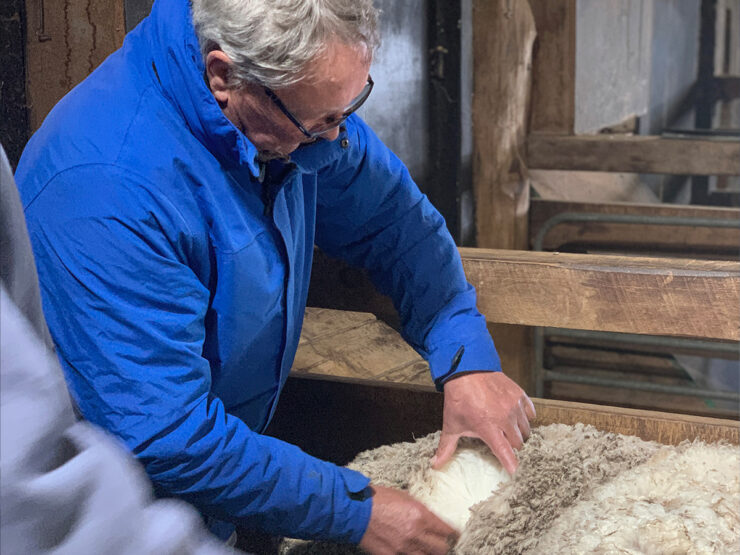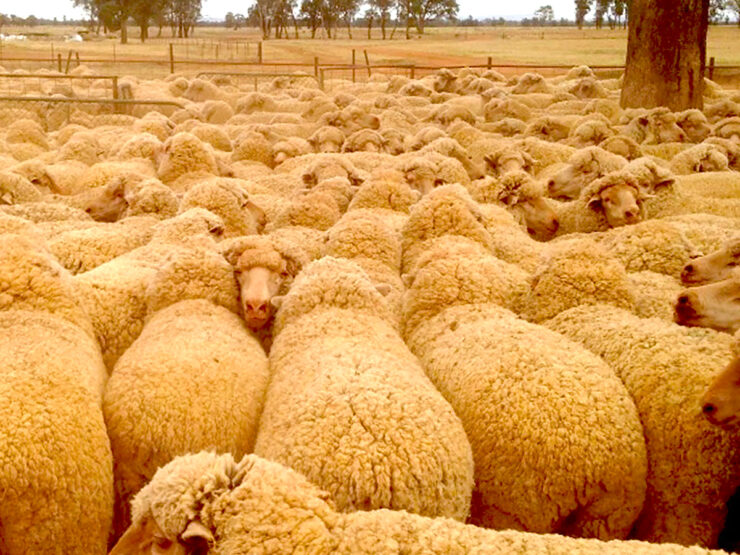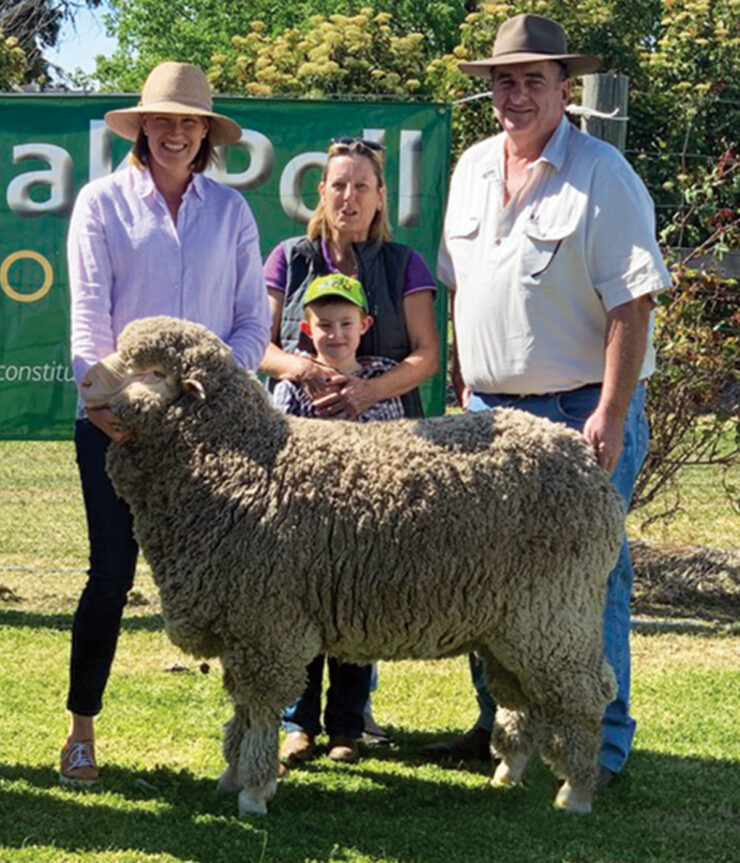The person responsible for the famed catch phrase of the Riverina Merino – Fibre, Frame, Fertility – is just as adamant of its relevance today as it was back when it was created.
Michael Elmes from Narrandera, NSW, is a renowned sheep classer and works alongside Alistair and Natasha Wells in the One Oak Poll stud flock.
When he was field day president back in the early 2000s, he came up with those three key words of fibre, frame, and fertility – which all had to be in balance to make a profitable sheep.
And while he said some studs chased trends, he had clear consistent advice to the Wells across the two decades he has been working with them.
“I say that the first thing they have to do is breed a sheep that they will know will do well for them in their country,” Mr Elmes said.
“If they can’t make money from those sheep, then no one else will be able to.”
It’s this commercial reality that been over-arching factor for the breeding goals for One Oak Poll, with Mr Elmes working to provide extra input to the flock.
While it’s possible to tinker around with different traits, he said there were two things that were non-negotiable.
A sheep had to be able to survive and thrive, and it had to be able to produce – wool and meat – and reproduce.
“Once you have the chassis right, you can hang what you like off it, whether that is fleece or red meat,” Mr Elmes said.
But a sheep also had to have constitution and conformation, which were critical and went back to his first point of being able to survive and thrive in their environment.
“Breeding a sheep is about balance,” Mr Elmes said.
“It is like a three-legged chair – you put too much emphasis on one trait and its like making one chair leg longer and the whole thing is out of balance, and it tips over.”
There are horses for courses and rams for environments, and Mr Elmes said the constitution and conformation of the One Oak Poll sheep meant they were able to survive and thrive almost anywhere but especially where conditions were not necessarily easy.
That, he said, was demonstrated in the domination of the One Oak Poll bloodline in the central western areas of NSW like West Wyalong and Lake Cargelligo, where 75 per cent of placegetters in ewe competitions over a number of years were One Oak Poll blood.
“With One Oak Poll, their clients’ sheep do the talking,” Mr Elmes said.
“Clearly the wool is excellent to win these competitions or be placed, but you also don’t win a ewe competition with a sheep with a poor growth rate so they have the meat side covered too.”
Mr Elmes said One Oak Poll was established when horned Merinos were mainstream and poll sheep were considered a novelty, and their ability to produce high volumes of wool was thought to be impossible.
Now, with the industry swing to polled sheep, he said the stud was coming into its own as it had 40 years of breeding sheep with big wool cuts and nourishment.
“They really have put to bed the fact that Poll Merino sheep do not cut as much wool as horned Merinos,” he said.
Then there is the easy-care nature of the bloodline, and while they cut a lot of wool and have frame and scale, they were still sheep that were easy to run.
“Labour and the availability of people would have to be one of the biggest issues facing the wool industry at the moment, especially when getting shearers,” Mr Elmes said.
“Big, heavy wool cutters don’t mean they are hard to look after, and if the lock structure and the staple length and the drape of the fleece is right, then they comb well and are easier to shear.
“Above all, sheep have to be commercially viable, and it comes back to the Wells knowing first hand their sheep are making them money, and then the rest flows on from that.”













